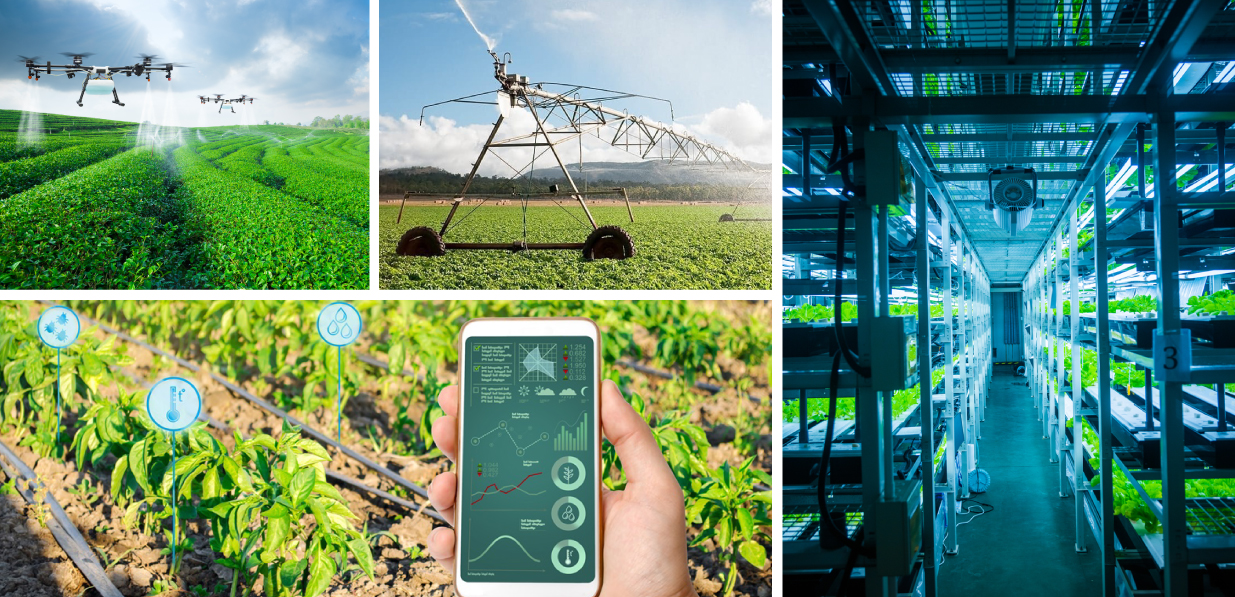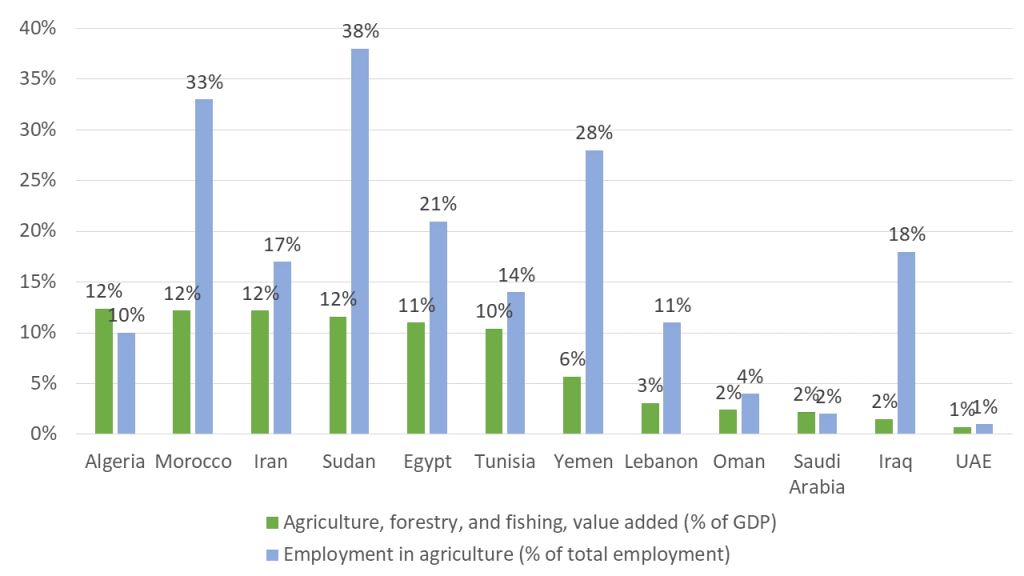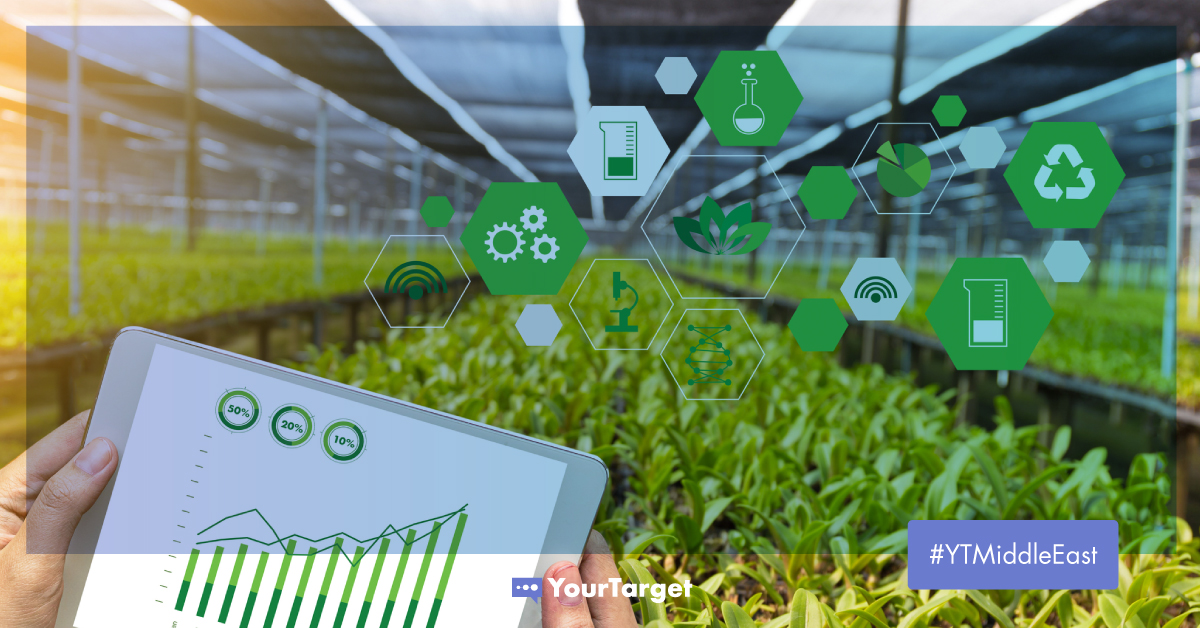By the year 2050, the world’s population is predicted to reach 10 billion. The Middle East has one of the planet’s fastest-growing populations, and its number of inhabitants has almost quadrupled since 2000 and is predicted to reach 600 million by 2050.
The result of this population increase has led to significant food shortages throughout the region and subsequent price rises due to rising demand for imports. GCC countries import 90% of their food products on average, placing them in a precarious position if global food shortages were to occur.
To keep up with the ever-increasing demand for food, agriculture technology (agritech) solutions are being developed that explore how existing and emerging technologies can be leveraged to promote resilient and efficient farming and food production systems.
Just as many other sectors in the region are undergoing rapid digital transformation – including education, travel & tourism, and healthcare – so too is its AgriTech sector.
In this article, we take a look at the digital evolution of the agriculture industry in the Middle East and how this will impact the region moving forward.
What is AgriTech?
Put simply, AgriTech is the application of technology and emerging innovations to improve process efficiency in the agricultural sector. It’s where tech solutions are applied to improve various elements of the farming and growing process to develop a more secure and sustainable future.

There are many different application use cases for AgriTech and various technologies are involved. The aim of all of them is to empower producers to grow more food in less space and use fewer resources by sensing and reacting to the environment to maximise production and limit the amount of damage caused.
Examples of technologies that AgriTech companies use include:
- IoT-based sensor networks
- Weather forecasting
- Smart land monitoring
- Drones and robotics to monitor and improve farming
- Vertical farming
- Smart floating farms
- Soil management & smart irrigation
- Crop disease management
The current state of AgriTech in the Middle East
Although agriculture in the Middle East accounts for just 13% of the region’s GDP, the AgriTech market size in the MENA region is anticipated to grow with a CAGR of 12.62%.
AgriTech is increasingly implemented in the Middle East as recent developments and the Covid-19 pandemic accelerated its adoption across the region to do its part in promoting future food supply. The growing need to optimize the use of land and water resources, as well as the pressing nature of increasing temperatures have caused all of the Gulf nations to ramp up their AgriTech initiatives.
Agriculture has always been at the center of social and economic activity in the Middle East, despite the region largely relying on imports. People are reliant on the farming of livestock and the production of cereals, fruits and vegetables. However, the region’s arid climate and limited water resources have been catalysts for its becoming a hub of agricultural innovation.
In recent years, further AgriTech innovation has been bolstered by shifting consumer ideals and behaviors and increasing investor confidence in the industry. Consumers are becoming more concerned with where their food comes from which has increased demand for locally grown, sustainable food sources that use fewer of the world’s finite resources.

To understand the current state of AgriTech in the Middle East, we can look at a few key examples.
In the United Arab Emirates (UAE), various entities are leveraging vertical farming techniques to cultivate local produce while producing less water than outdoor fields. Another example of the growing market for AgriTech can be found in Dubai at UNS Farms, which grows produce with soil-less farming techniques to optimize plant growth, allowing locals to purchase salad, mangoes and more grown in the UAE.
In 2020, the UAE government established the AgriTech Sector Development Team which is composed of public and private stakeholders operating in the sector. The goal of the initiative is to drive research projects and encourage investment in Abu Dhabi. In the UAE, where the majority of food is imported, governments are investing heavily in AgriTech to bolster the internal economy for produce and reduce reliance on external sources, particularly as the world’s political and environmental climate becomes more unpredictable.
The industry has also received huge support from initiatives like Saudi Arabia’s Vision 2030, which emphasises the importance of the growth of the region’s agriculture sector to support a more sustainable future.
In 2023, Doha will play host to the International Horticultural Expo, and organizations such as the Kuwait Foundation for the Advancement of Sciences (KFAS) and Oman’s Ministry of Agriculture and Fisheries are actively seeking proposals for digital solutions that empower farmers through smart agriculture projects aimed at improving the efficiency and sustainability of food production. The same is happening in Bahrain, with the government’s sustainable development goals that seek to achieve food security and promote sustainable agriculture.
The impact of AgriTech
The digitization of the agriculture industry and the increase in agriculture technology startups has many advantages. For instance, the use of AgriTech innovations can help farmers increase their crop yields, ensure better quality products, and cultivate more for a reduced price. Moreover, a major focus of the industry is to reduce the impact of farming on the environment by developing sustainable solutions that are less harmful to the world and consumers.
The main reason the AgriTech industry is experiencing a huge boom in the region is to ensure food security and bolster the economy moving forward. Across industries, the Middle East is embracing digital transformation to increase productivity and forge its competitiveness and investment desirability in the future.
Without improving its agricultural output, the Middle East will likely see its productivity gap grow, which will increase reliance on traditional farming and cause food prices to grow. Instead, it must embrace AgriTech innovations and increase investments to reduce its dependency on imports and develop more sustainable supply chains that can withstand the volatile global conditions.
The successful growth of the industry will also lead to the birth of many AgriTech jobs, which will drive the region’s economy and enhance the AgriTech market size.
Currently, many agriculture startups are working to develop projects on AgriTech farms and in AgriTech greenhouses. Some examples include:

Palmear, which uses AI and acoustics to detect pests in agriculture;

Pure Harvest, a recognized leader in sustainable agricuLture;

and Red Sea Farms, a company focused on the development of sustainable agriculture technologies.
The future of AgriTech in the Middle East
Agriculture is changing, and its future is uncertain. But the huge cost both in resources and the environmental impact of traditional farming techniques are driving the search for alternative solutions that cater to a more sustainable and healthy future.
In an article published on CIO, Sky Kurtz, co-founder and CEO of Pure Harvest, commented on the growing AgriTech industry:
“The cry for change, for sustainability, and for safer food alternatives has been getting louder, whether it be by the government, media, or consumers, who demonstrate the very real demand for technologies to address these very real challenges […] A fast-growing population and growing tourism are increasing the demand for healthy food options, and consumers increasingly prefer locally-produced food.”
Moving forward, the region is focused on increasing investment in emerging technologies such as AI, machine learning, and IoT to bolster industry growth and provide consumers with solutions that place them on the global trajectory towards digital empowerment. AgriTech is just one facet of the region’s determination to transform itself into a modern hub of innovation.
Want to learn more about how industries across the Middle East are leveraging digital transformation? Download the YourTarget eBook: Digital Marketing Trends and Forecast 2022 with a Special Focus on the Middle East.

